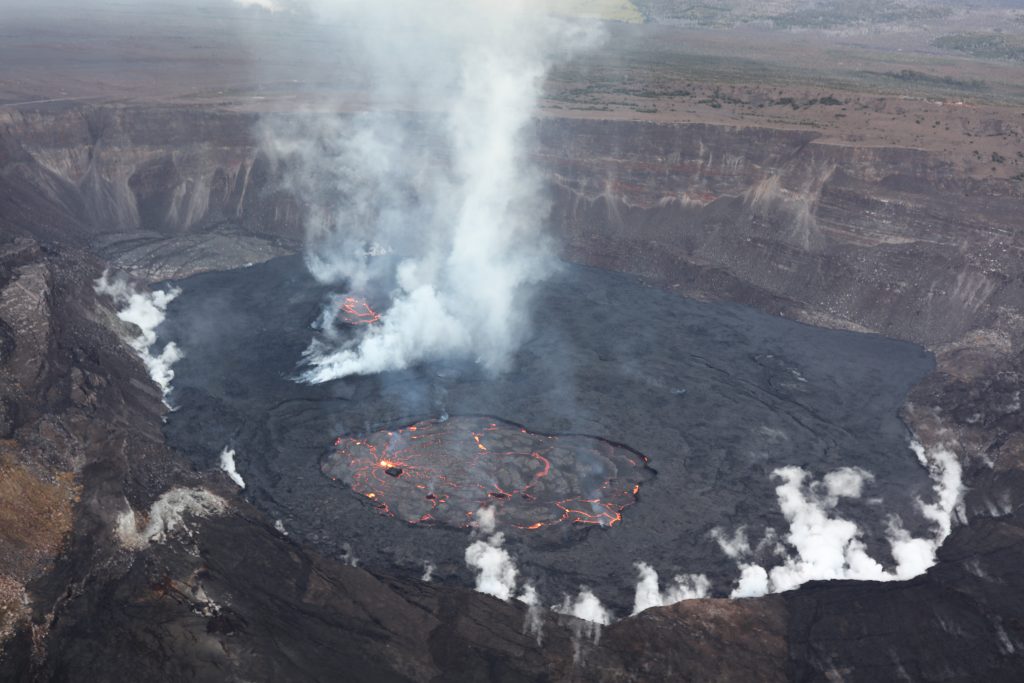Big Island’s Kīlauea volcano still erupting, but safely within Halemaʻumaʻu crater

Kīlauea Volcano on the Big Island, which began at about 4:34 p.m. on Jan. 5, is still spewing lava at the summit caldera. The eruption remains safely contained within Halemaʻumaʻu crater.
Activity is concentrated in a large lava lake in the eastern half of the crater and a smaller lake to the west, in the basin of the 2021-2022 lava lake, according to the Jan. 20 update of the Hawaiian Volcano Observatory.
The lava can be seen from Hawaiʻi Volcanoes National Park. Click here for tips on where to watch the eruption, and how to do so safely.
The eastern lava lake has one dominant fountain and an area of approximately 25 acres as of Jan. 17. The surface area of the lake did not change much over the past 24 hours, and only a couple overflows onto the crater floor were visible from webcam views. A live-stream video of the lava lake is available at: https://www.youtube.com/usgs/live.

High levels of volcanic gas are the primary hazard of concern, and can have far-reaching effects downwind. Large amounts of volcanic gas — primarily water vapor, carbon dioxide and sulfur dioxide — are continuously released during eruptions of Kīlauea Volcano. As sulfur dioxide is released from the summit, it reacts in the atmosphere to create the visible haze known as vog (volcanic smog) that has been observed downwind of Kīlauea.
Vog creates the potential for airborne health hazards to residents and visitors, damages agricultural crops and other plants, and affects livestock. For more information on gas hazards at the summit of Kīlauea, please see: https://pubs.er.usgs.gov/publication/fs20173017. Vog information can be found at https://vog.ivhhn.org.
Please see the Hawaiʻi Volcanoes National Park website for visitor information: https://www.nps.gov/havo/index.htm. Visitors to Hawaiʻi Volcanoes National Park should note that under southerly (non-trade) wind conditions, there is potential for a dusting of powdery to gritty ash composed of volcanic glass and rock fragments. These ashfalls represent a minor hazard, but visitors should be aware that such dustings at areas around the Kīlauea summit are possible.



